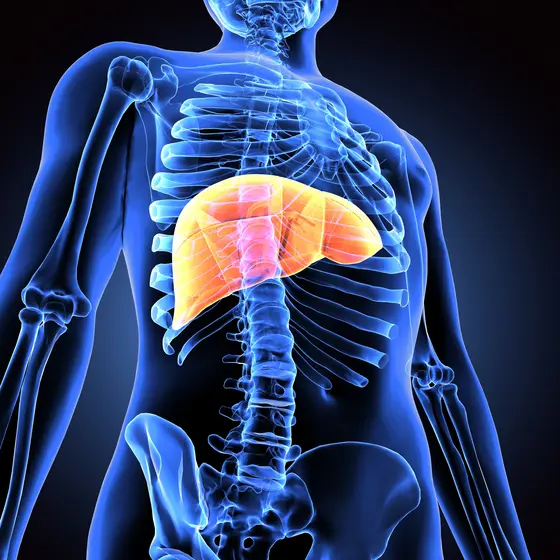The term liver cancer includes hepatocellular carcinoma, intrahepatic carcinoma of the bile duct, and a mixed form, combined liver/biliary duct cacrinoma (cHCC/CCA). The cells of cHCC/CCA exhibit features of both forms of cancer. This rare cHCC/CCA is considered very aggressive and responds extreme poorly to current treatments.
To identify potential targets for new therapies, a team led by Mathias Heikenwälder of the German Cancer Research Center and Eithan Galun of the Hebrew University in Jerusalem searched for the cellular origin of these tumors. The researchers conducted their studies in mice that were genetically modified to develop chronic liver inflammation and hepatocellular carcinoma at an older age, and later also developed cHCC/CCA. The molecular profile of the cHCC/CCA tumor cells in these animals largely matched that of human cHCC/CCA cells.
The German-Israeli team found that cHCC/CCA develops from degenerate liver cell precursors. In contrast, hepatocellular carcinoma most likely arises from damaged mature liver cells.
In cHCC/CCA cells, genes of the pro-inflammatory interleukin 6 (IL-6) signaling pathway are particularly active. The source of the IL-6 that activates this signaling pathway are aging immune cells. The hallmark of cell aging, which scientists refer to as “senescence“, is the release of a whole cocktail of pro-inflammatory signaling molecules, among which IL-6 plays the main role.
Blocking of IL-6 action by specific antibodies reduced both the number and size of cHCC/CCA tumors in the mice. An agent that drives senescent cells into programmed cell death apoptosis, thereby drying up the source of IL-6, also inhibited the development of cHCC/CCA.
Today, the most effective therapy for cHCC/CCA is surgical removal of the tumors. It is only successful if the cancer is detected at a very early stage. “Blocking of IL-6 or agents that kill senescent IL-6-producing cells could now be further tested as promising treatment approaches against this type of cancer,“ explains Mathias Heikenwälder, one of the corresponding authors of the current publication. He adds: “There is now growing evidence that tumors actually diagnosed as hepatocellular carcinoma also partially contain cells of a cHCC/CCA. This means that potential therapeutic approaches against cHCC/CCA could also benefit some patients with hepatocellular cancer.“
Nofar Rosenberg, Matthias Van Haele, Tali Lanton, Neta Brashi, Zohar Bromberg, Hanan Adler, Hilla Giladi, Amnon Peled, Daniel S. Goldenberg, Jonathan H. Axelrod, Alina Simerzin, Chofit Chai, Mor Paldor, Auerlia Markezana, Dayana Yaish, Zohar Shemuliam, Dvora Gross, Shanny Barnoy, Maytal Gefen, Osher Amran, Sofie Claerhout, Mirian Fernández-Vaquero, María García-Beccaria, Danijela Heide, Michal Shoshkes-Carmel, Dirk Schmidt Arras, Sharona Elgavish, Yuval Nevo, Hadar Benyamini, Janina E.E. Tirnitz-Parker, Aranzazu Sanchez, Blanca Herrera, Rifaat Safadi, Klaus H. Kaestner, Stefan Rose-John, Tania Roskams, Mathias Heikenwälder*, Eithan Galun*: Combined hepatocellular – cholangiocarcinoma derives from liver progenitor cells and depends on senescence and IL6 trans-signaling
Journal of Hepatology 2022, DOI: https://doi.org/10.1016/j.jhep.2022.07.029
